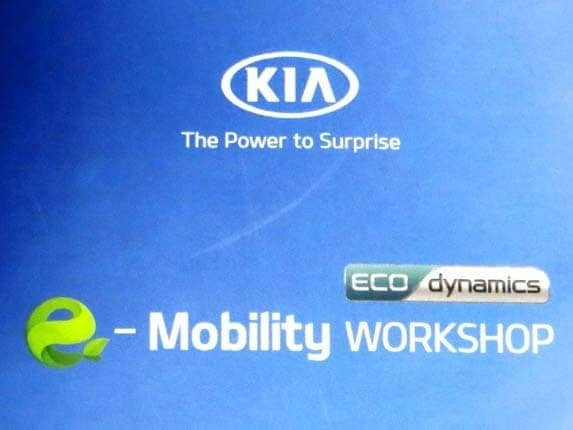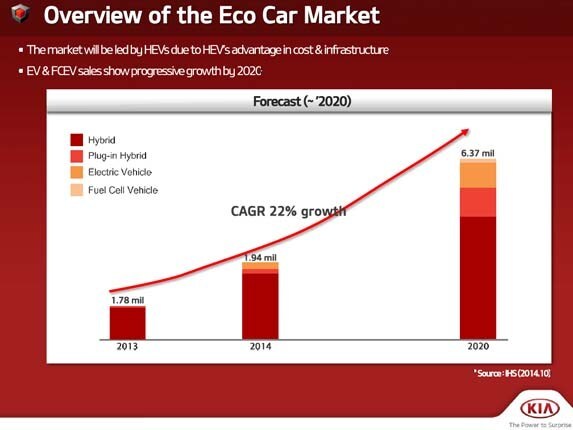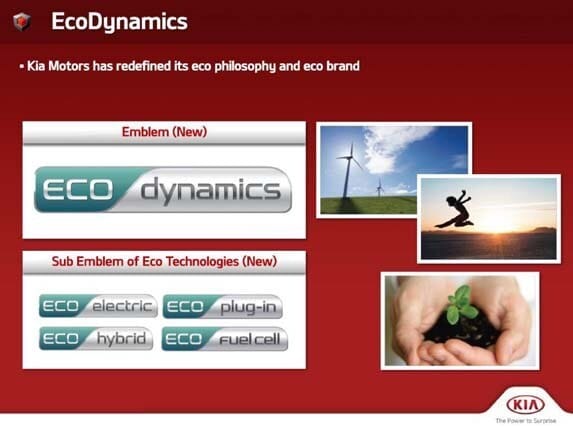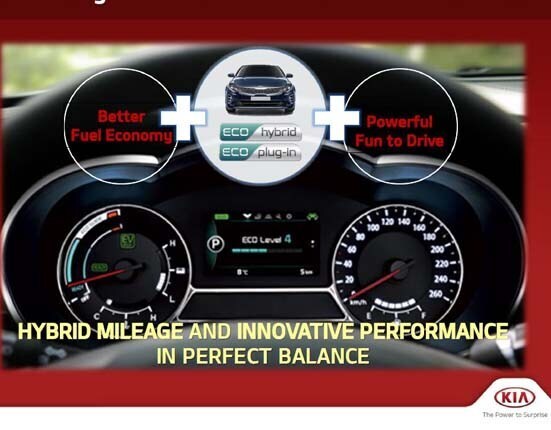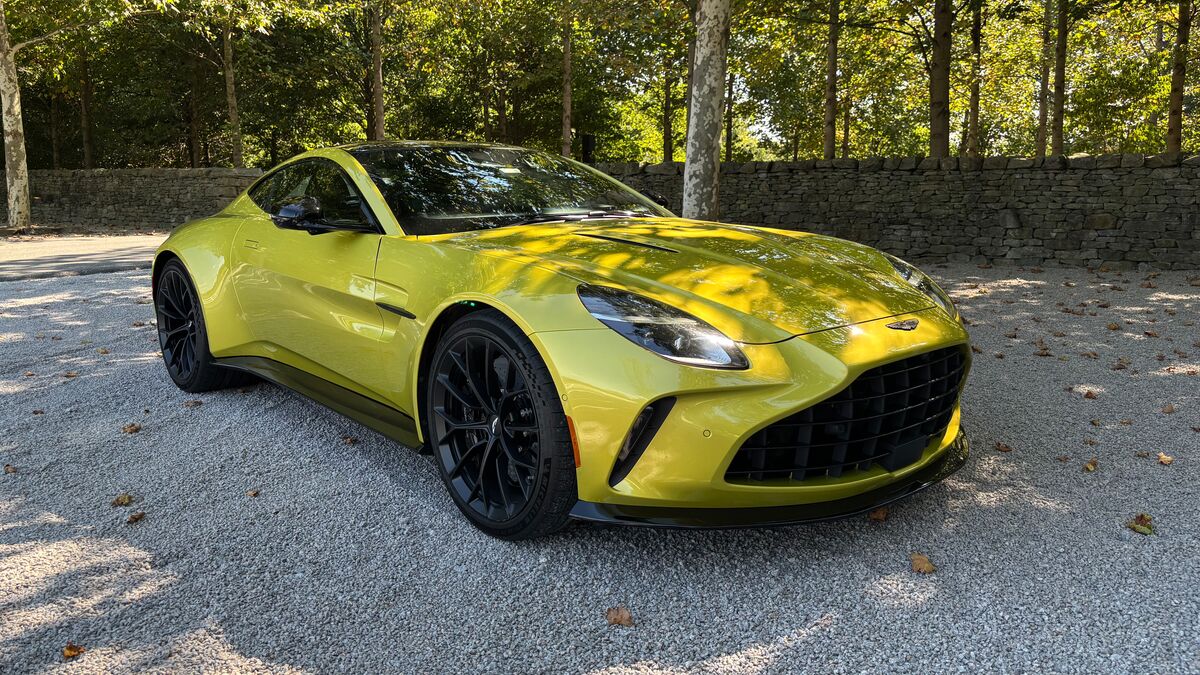Kia Motors used an e-Mobility Workshop in Korea to announce an ambitious program for industry leadership among green vehicle by 2020. This effort will encompass includes a variety of advanced powertrain components that will help Kia significantly increase its average fuel economy as well as see it introduce new hybrid and plug-in hybrids as well as a new fuel cell-powered model. Kia confirmed that its parent company, Hyundai Motor Group, has committed $10.2 billion to the overall effort, which includes expanding its expertise in smart car/autonomous driving technology. Much of the funding is earmarked for building new facilities and adding some 7,300 jobs, primarily in the in the R&D area.
"The electric and plug-in hybrid vehicle market will grow rapidly in the coming years, and this investment will enable Kia to meet the growing demand with a range of advanced new products and technologies," noted Ki-Sang Lee, Senior Vice President, Eco Friendly Vehicle R&D Center, Kia Motors Corporation. "We don’t believe that there is any one ‘silver bullet’ that can satisfy the demand for low emission technology within the car industry, so we foresee a wide range of eco-friendly powertrains co-existing for an extended period of time. The plans we’ve announced today represent Kia’s ambition to become a worldwide leader in advanced propulsion technology."
Also: Kelley Blue Book Best Buy Awards of 2016
Green car portfolio will nearly triple
As for specific program details, Kia intends to expand its portfolio of green cars from the current four to 11 by the end of the decade. The first two of these new models will be the 2017 Kia Optima PHEV (Plug-in Hybrid) and the Kia Niro HUV (Hybrid Utility Vehicle), a compact crossover that also will launch here sometime next year and later spawn a plug-in variant of its own. While Kia declined to detail the specific configuration of its upcoming fuel cell vehicle, the company did state it will initially manufacture about 1,000 units annually with the number to grow based on consumer demand — and available supporting infrastructure.
Kia’s hydrogen-fueled electric car will be fitted with a next-gen fuel cell stack now under development. Roughly the size of a conventional 2.0-liter internal combustion engine, the new unit will be 15 percent lighter and 15 percent smaller than its existing counterpart yet be 5 percent more efficient and offer 10 percent better performance. That enhanced functionality has Kia projecting its FCEV will have a 500-mile range and a top speed of about 105 mph.
Also: Class of 2016 — New Cars Ready to Roll
Smaller, cleaner, more efficient engines
Kia will also replace seven of its 10 current gasoline and diesel engine ranges with next-gen alternatives as well as increase the use of turbocharging to allow displacements to be downsized. New strains of automatic transmissions with additional ratios and greater operating efficiency also are in the pipeline and the automaker also will expand the use of high-strength steel in body structures to help reduce curb weight of future models by about five percent. Kia intends to leverage these efforts to help raise its overall corporate fuel efficiency more than 25 percent by 2020 compared to the 2014 number.
More Kia News…
2017 Kia Sportage gains more style, sophistication and spirit
The all-new 2016 Kia Optima is our KBB.com Best Buy winner in the midsize sedan segment
Quick Take: 2016 Kia Sorento 2.0 Turbo
POPULAR AT KBB.COM
